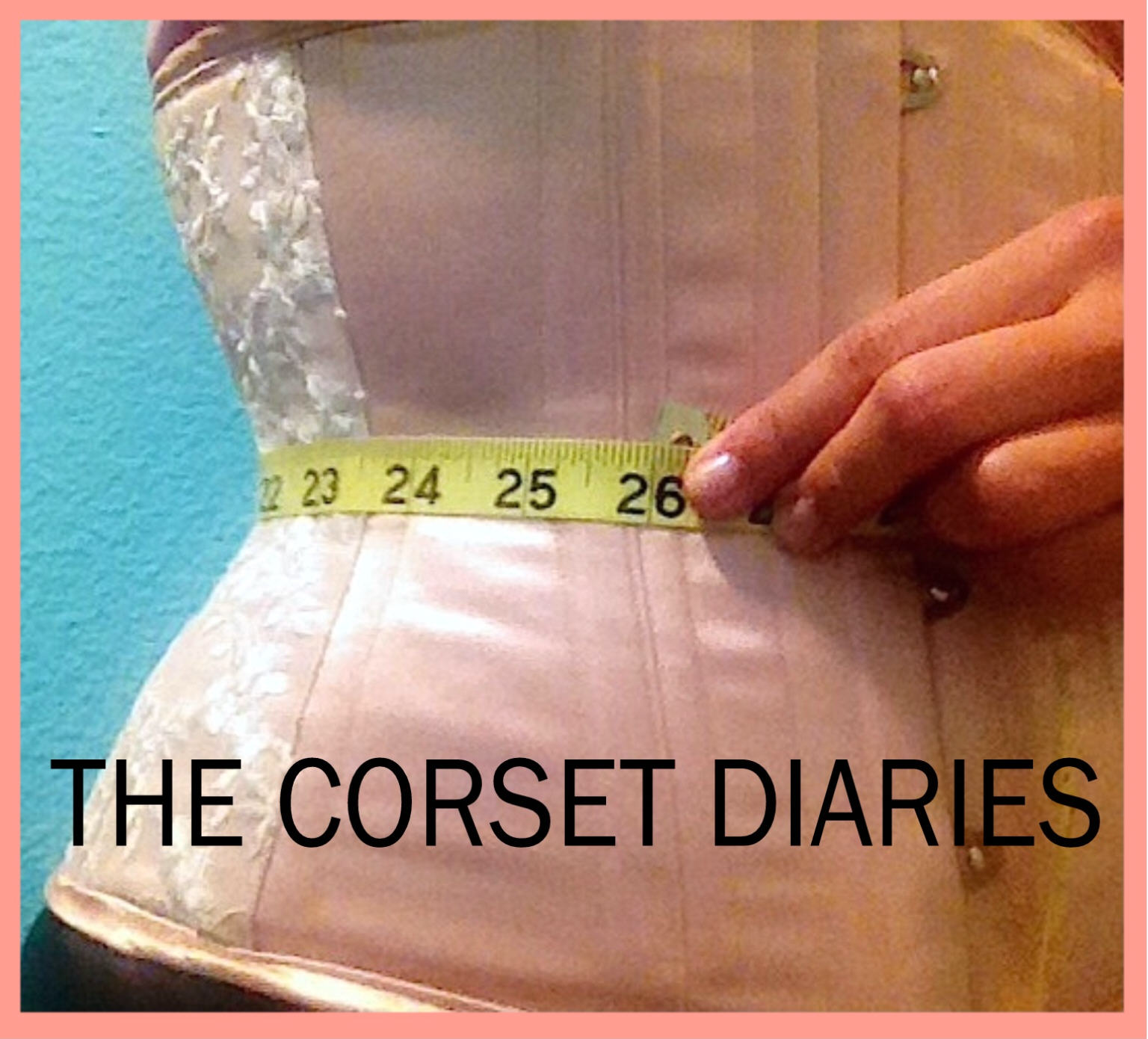I just finished talking with the neatest young woman who is a student, but also works part time as a waitress at a restaurant in a small town in West Virginia. “Neat” I think, for several reasons, not the least of which is that we are both soldiers in the world-wide army of corset enthusiasts who attempt on a daily basis to de-bunk common stereotypes against corsetry.
She like I, believe that the first movie in the series “Pirates of the Carribbean” is among the worst offenders who perpetuate balderdash about corsets and cater to an unthinking public. You’ll likely remember that the heroine wears a Renaissance corset, faints, and falls off a sea wall. It likely never happened in the entire history of the world, but in Hollywood, who cares about fact?
However, my new friend’s personal experience of the fallout of such prejudicial balderdash was more upsetting to me than the movie, because it was real and it caused her to suffer, but gratefully, not to give up on corsets. Another waitress in the restaurant who had just had a baby, began to notice my friend’s svelte figure when she was wearing a new corset under her work uniform. Quite innocently, as my friend began to enjoy the benefits of better back support, posture, and figure control, she began to verbally extol the corset’s virtues to this waitress and to anyone else who would listen.
The new mother complained to the restaurant owners that my friend “could not do her job wearing such a rigid , body-limiting garment to work,” yet there was no evidence that the corset impeded job performance at all. Bowing to social pressure and continuing negativity, the overly-sensitive owners ultimately asked my friend to take off her corset when at work.
We both agreed that jealousy was at foot in this experience. At a deeper level I believe something else was going on. I concur with UCLA Art History Professor David Kunzle who points clearly to our puritanical American society that inveigles against corsetry out of a deep seated, subconscious anxiety about sexuality. Wearing a corset sexualizes the body and makes female curves obvious. Sexual females are threatening upstarts to the puritans and sexist males among us, representing persons to be controlled and put down.
I was reminded of one of my early waist-training students, Camille. During the three months I coached Camille toward a four-inch waist reduction goal that she so admirably reached, I heard about increasingly frequent negative comments from her husband. His comments always targeted her corset. Camille never could exactly grok to what he was objecting, although I was pretty clear about it when she reported one of his complaining comments to be that “other men are looking at you.”
Toward the end of the three months her husband somewhat unexpectedly to Camille, served her with divorce papers. I wasn’t surprised. Camille, her sexuality, and taking control of her own appearance and body without his prior permission or support, had simply gotten out of his masculine control. She was no longer willing to be “barefoot and pregnant in the kitchen.” I was relieved to see that Camille completed her waist-training program and began to thrive in her new life unburdened by a clearly troubled former husband.
The happy end to today’s conversation is that my West Virginia informant is planning to complete her studies, quit her job, move to a larger city, and invest in a fine custom corset. She wants to waist train in preparation for her upcoming wedding.
Which all goes to prove that corset ignorance can be defeated with persistence, courage, and commitment to living a fact-based, fashionable, and fun life — while happily corseted on proper occasions!





